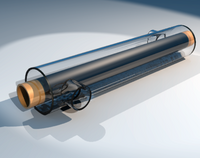
Photo from wikipedia
© The Author(s) 2021. Open Access This article is licensed under a Creative Commons Attribution 4.0 International License, which permits use, sharing, adaptation, distribution and reproduction in any medium or… Click to show full abstract
© The Author(s) 2021. Open Access This article is licensed under a Creative Commons Attribution 4.0 International License, which permits use, sharing, adaptation, distribution and reproduction in any medium or format, as long as you give appropriate credit to the original author(s) and the source, provide a link to the Creative Commons licence, and indicate if changes were made. The images or other third party material in this article are included in the article’s Creative Commons licence, unless indicated otherwise in a credit line to the material. If material is not included in the article’s Creative Commons licence and your intended use is not permitted by statutory regulation or exceeds the permitted use, you will need to obtain permission directly from the copyright holder. To view a copy of this licence, visit http:// creat iveco mmons. org/ licen ses/ by/4. 0/. Dear editor, We read with great interest the article of Tongyoo et al. “High-flow nasal oxygen cannula vs. noninvasive mechanical ventilation to prevent reintubation in sepsis: a randomized controlled trial” published in Annals of Intensive Care [1]. The authors compared high-flow nasal oxygen cannula (HFNC) and noninvasive mechanical ventilation (NIV) as a ventilatory support in post-extubated sepsis patients seeking a reduction of the reintubation rate using HFNC. A few reservations could be considered. We felt that the study could have followed a more comprehensive approach concerning acute respiratory failure, pulmonary mechanics and physiology of ventilatory management. This is particularly perceptible in front of the absence of data characterizing patients’ neural drive and pulmonary mechanics, namely, airway pressures, airway collapsibility and respiratory system compliance and resistance [2], both prior and after extubation, which could identify a type of patients benefiting from NIV over HFNC and vice versa. Another important factor to assess, is the patient’s psychological state which could be a cause of extubation failure and thereafter alter the adherence to a type of ventilatory support. Secondly, the causes of reintubation presented by the authors could mostly be described as consequences of severe acute respiratory failure (hypoxia, inability to clear secretion, altered mental status, cardiac arrest, etc.), whereas it would have been more adapted to characterize the direct clinical causes of the respiratory failure such as, delirium, neuromuscular disorders, laryngeal edema, airways collapsibility, left heart failure, etc. In our opinion, adapting different means of ventilatory support in accordance to the natural evolution of a disease, or in this particular case, according to the mechanism and severity of the post-extubation acute respiratory failure is more interesting than comparing one technique of ventilatory support to another. NIV is adapted in ARF associated with altered respiratory mechanics while HFNC is adapted to situations at risk of high patient–device interaction generating P-SILI (Patient Self-Inflicted Lung Injury). Perhaps, taking into consideration the previously stated data, identifying a subgroup of patients presenting the same mechanism of post-extubation respiratory failure that would benefit from one technique rather than the other would be feasible and of great value.
Journal Title: Annals of Intensive Care
Year Published: 2021
Link to full text (if available)
Share on Social Media: Sign Up to like & get
recommendations!